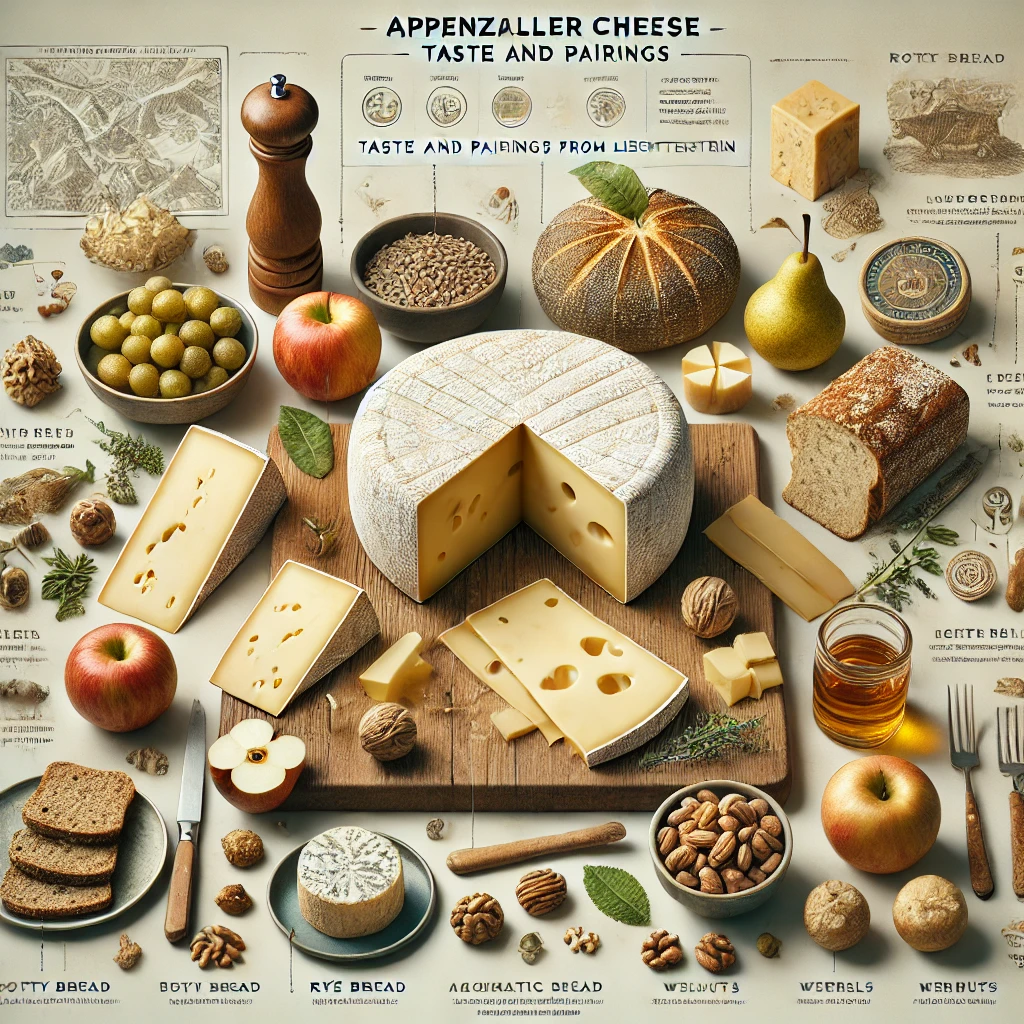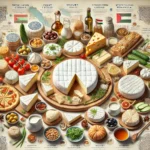Appenzeller cheese is one of Europe’s most characterful alpine cheeses—bold, aromatic, and steeped in centuries of mountain tradition. While its historic roots lie just across the border in the Appenzell region of Switzerland, Appenzeller has long been produced, aged, traded, and enjoyed throughout the eastern Alps, including neighboring Liechtenstein. Today, cheese lovers in Liechtenstein prize Appenzeller for its unmistakable flavor profile and exceptional versatility at the table.
This in-depth guide explores the taste, texture, aging styles, and perfect pairings of Appenzeller cheese, with a special focus on how it fits into Liechtenstein’s alpine food culture. Whether you’re curating a gourmet cheese board or planning a regional menu, this article delivers everything you need—clearly, accurately, and deliciously.
What Makes Appenzeller Cheese Unique?
Appenzeller stands apart thanks to a closely guarded herbal brine used during aging. Each wheel is regularly washed with this brine, a blend of wine, herbs, roots, and spices known only to a small circle of producers. This ritual infuses the cheese with a layered aroma and deep savory complexity.
Key defining traits include:
-
Raw cow’s milk from alpine pastures
-
Dense yet supple texture
-
Spicy, nutty, and savory flavor that intensifies with age
-
Natural rind, often orange-brown from repeated washing
Because Liechtenstein shares the same alpine climate and grazing traditions, Appenzeller consumed there expresses familiar mountain notes—fresh grass, herbs, and a gentle lactic sweetness beneath the spice.
Appenzeller Cheese Flavor Profile
Young Appenzeller (3–4 months)
Young wheels are mild and approachable. Expect:
-
Gentle dairy sweetness
-
Subtle nuttiness
-
Light herbal aroma
This stage is ideal for those new to alpine cheeses or for lighter pairings.
Classic Appenzeller (6–8 months)
The most popular style, offering balance and depth:
-
Savory umami character
-
Toasted nuts and butter
-
A warm, peppery finish
In Liechtenstein, this age is commonly served with rustic bread and local wines.
Extra Aged Appenzeller (9–12+ months)
Bold and unforgettable:
-
Intense spice and earthiness
-
Firm, crumbly texture
-
Long, warming aftertaste
This version appeals to seasoned cheese enthusiasts who enjoy powerful alpine flavors.
Texture and Appearance
Appenzeller’s paste is compact and elastic, never rubbery. Small, irregular holes dot the interior, while the rind develops a darker hue as it matures. When sliced, it releases a fragrant aroma that hints at herbs, cellar wood, and mountain air.
Appenzeller Cheese in Liechtenstein’s Food Culture
Liechtenstein’s cuisine reflects alpine practicality and elegance. Appenzeller cheese fits naturally into this tradition, commonly used in:
-
Melted dishes inspired by fondue and raclette
-
Farmhouse sandwiches with dark rye bread
-
Hearty alpine breakfasts alongside cured meats
Local markets often stock multiple aging levels, allowing residents to choose flavors that suit seasonal meals—from lighter summer plates to robust winter fare.
Best Pairings for Appenzeller Cheese
Bread & Grains
-
Crusty sourdough
-
Alpine rye bread
-
Seeded crackers
The cheese’s spice contrasts beautifully with hearty grains.
Fruits & Nuts
-
Crisp apples and pears
-
Grapes
-
Walnuts and hazelnuts
Natural sweetness balances Appenzeller’s savory depth.
Meat & Charcuterie
-
Air-dried beef
-
Smoked ham
-
Alpine sausages
These enhance the cheese’s umami without overpowering it.
Wine Pairings
-
Dry Riesling
-
Grüner Veltliner
-
Light Pinot Noir
Acidity and minerality cut through the cheese’s richness.
Beer & Spirits
-
Unfiltered lager
-
Amber ale
-
Herbal alpine schnapps (in small sips)
These echo the herbal brine notes found in the cheese.
Cooking with Appenzeller Cheese
Appenzeller melts smoothly, making it ideal for hot dishes. Popular uses include:
-
Alpine-style fondue blends
-
Cheese-topped potatoes or rösti
-
Savory tarts and quiches
-
Grilled cheese sandwiches with caramelized onions
In Liechtenstein kitchens, it’s often combined with potatoes and onions for comforting, mountain-inspired meals.
How to Store and Serve Appenzeller
Storage tips:
-
Wrap in wax or cheese paper
-
Keep refrigerated at moderate humidity
-
Avoid airtight plastic for long storage
Serving tips:
-
Bring to room temperature 30–45 minutes before serving
-
Slice thinly to release aromas
-
Pair with neutral accompaniments first, then build intensity
Buying Quality Appenzeller in Liechtenstein
When purchasing, look for:
-
A firm, uncracked rind
-
Clean, savory aroma (never sour)
-
Clear aging information
Specialty cheese shops and alpine markets in Liechtenstein often carry authentic wheels sourced from trusted alpine dairies.
Why Appenzeller Cheese Remains a Favorite
Appenzeller’s appeal lies in its honesty—pure milk, time, and tradition. Its bold yet balanced profile suits both everyday meals and refined tastings. For cheese lovers in Liechtenstein, it represents a shared alpine heritage that transcends borders.
Frequently Asked Questions (FAQ)
What does Appenzeller cheese taste like?
It ranges from mildly nutty when young to boldly spicy and savory when aged, with herbal and alpine notes.
Is Appenzeller cheese made in Liechtenstein?
Its origin is the neighboring Appenzell region, but it is widely aged, sold, and enjoyed in Liechtenstein due to shared alpine traditions.
What wine pairs best with Appenzeller cheese?
Dry white wines like Riesling or Grüner Veltliner work best, while light red wines also pair well with aged versions.
Is Appenzeller cheese good for cooking?
Yes. It melts smoothly and adds depth to fondue, gratins, and baked dishes.
How should Appenzeller cheese be stored?
Wrap it in cheese paper and refrigerate. Bring to room temperature before serving for best flavor.



